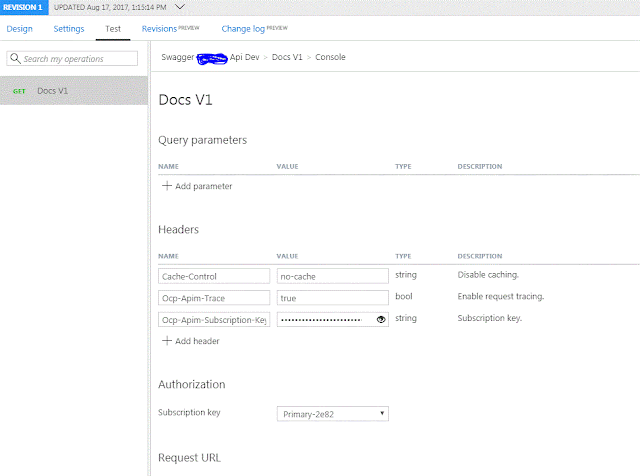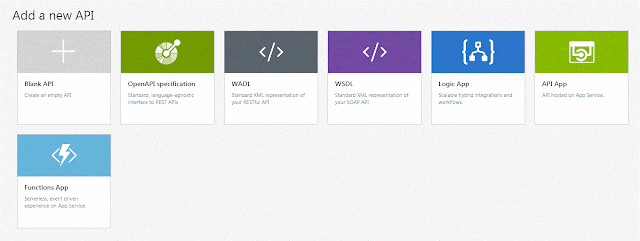Monday, December 18, 2017
Tuesday, December 12, 2017
Powershell Set IIS apppool custom identity credential
import-module webadministration
function Set-WebsiteAppPoolCustomIdentity([String] $appPoolName, [String] $userId, [String] $pwd)
{
Write-Host $appPoolName;
$webAppPool = get-item IIS:\AppPools\$appPoolName
$webAppPool.processModel.userName = $userId;
$webAppPool.processModel.password = $pwd;
$webAppPool.processModel.identityType = 3;
$webAppPool | Set-Item
$webAppPool.Stop();
$webAppPool.Start();
Write-Host "IIS Recycled";
$webAppPool = get-item iis:\apppools\$appPoolName;
write-host "New Pool User: " $webAppPool.processModel.userName;
write-host "New Pool PWd: " $webAppPool.processModel.password;
}
Set-WebsiteAppPoolCustomIdentity -appPoolName "abc" -userId "hello" -pwd "world"
function Set-WebsiteAppPoolCustomIdentity([String] $appPoolName, [String] $userId, [String] $pwd)
{
Write-Host $appPoolName;
$webAppPool = get-item IIS:\AppPools\$appPoolName
$webAppPool.processModel.userName = $userId;
$webAppPool.processModel.password = $pwd;
$webAppPool.processModel.identityType = 3;
$webAppPool | Set-Item
$webAppPool.Stop();
$webAppPool.Start();
Write-Host "IIS Recycled";
$webAppPool = get-item iis:\apppools\$appPoolName;
write-host "New Pool User: " $webAppPool.processModel.userName;
write-host "New Pool PWd: " $webAppPool.processModel.password;
}
Set-WebsiteAppPoolCustomIdentity -appPoolName "abc" -userId "hello" -pwd "world"
Wednesday, November 22, 2017
Microsoft Azure Discovery Day in Melbourne- Indeed a good show
I urge folks out there in Australia to leverage this wonderful opportunity to gather know and how about Azure. Too many things to catch up. Very fast pace of improvement, new services , new products Microsoft Azure is offering on the table so far in terms of PAAS, IAAS and SAAS. Having said that I attended Microsoft Azure Discovery Day in Melbourne on 21st Nov 2017. I liked the presentation , demo and short knowledge transitioned by presenter. I must say there is many thing happening in Azure space.
- Continuous Delivery as part of App Service
- Logic App
- Azure Function
- Web Apps
- Automation Run book
- Security Centre
- Cloudyn for cost and estimation
- OMS
- App Insight
- Azure Template
- APIM
Management- Create mock API, test api. https://channel9.msdn.com/Shows/Azure-Friday/Azure-API-Management-New-Admin-UI-and-Mocks
-
[You can now mock api data without being backend ready. You can test api without using developer portal.
Swagger definition available as part of code editor.]
References:
Thursday, November 9, 2017
Sitecore Dynamic Placeholder
I prefer
- TDS
- TDS with glass mapper template[Auto code generation for sitecore template model]
- Fortis Dynamic Placeholder Nuget
- Sitecore 8.2.1
- MVC 5
- .Net framework 4.5.2
The difficult part
of sitecore is setup stage to start your development.
Install MVC Sitecore 8.2.1
Sitecore solution
base nuget package can be found in above documentation. Follow step by step
instruction.
Install Glass mapper
Install Dynamic Placeholder Nuget
Install TDS
Use wizard to create master content tree sync solution
Sitecore .Net Solution
Glass mapper TDS - Template
Sitecore Rocks
Dynamic Placeholder
Glass Mapper @editable View Rendering
To create this
sample. I have created two component in MVC and then corresponding renderings
in sitecore.
View as
Component
|
Placeholder
|
Sitecore Renderings
|
|
1
|
MainLayoutPage.cshtml
<html>
<body> <div class="container"> @Html.Sitecore().DynamicPlaceholder("dynamic-row") </div> </body> </html> |
dynamic-row
|
|
2
|
OneRowThreeColumn.cshtml
<div class="row">
<div class="col-sm-4"> <div class="tile--bordered"> @Html.Sitecore().DynamicPlaceholder("dynamic-content") </div> </div> <div class="col-sm-4"> <div class="tile--bordered"> @Html.Sitecore().DynamicPlaceholder("dynamic-content") </div> </div> <div class="col-sm-4"> <div class="tile--bordered"> @Html.Sitecore().DynamicPlaceholder("dynamic-content") </div> </div> </div> |
dynamic-row
|
One Row Three Column
|
3
|
RichText.cshtml
@inherits Glass.Mapper.Sc.Web.Mvc.GlassView
<p class="tile__title">@Editable(Model, y=>y.Title)</p> <p class="tile__sub-title"> @if (Model != null) { @Editable(Model, y => y.Detail) } </p> |
dynamic-content
|
***Rich Text with Model(Template- Data Template
SingleRichText)
|
Create following items in sitecore:
- Layout
- Data Template
- Renderings
- Placeholder setting
- Page item in content tree
- Layout: MainLayout
2.0 Placeholder Settings: dynamic-row
2.1 Placeholder Settings: dynamic-content
3.0 Renderings: One Row Three Column
3.1 Renderings: Rich Text
3.2 Data Template
- Content Tree
- Presentation: Shared Layout
- Experience Editor
- Presentation: Post Publish- Final Rendering
Wednesday, October 25, 2017
Sunday, October 1, 2017
C# Linq ,Generics, Lamda expression and many more.
Introduction
I'll keep this space updating my most used c# stuff in here. This is work in progress to have list of all referenced code that is useful at times of implementation.
Linq Data Parallelism
var quotes
=quotesForAllProducts();//e.g Get quotes for all products
Parallel.ForEach(products, item => Process(item,quotes));
private void Process(Product item,List<Quote> quotes)
{
var quote= quotes?.SingleOrDefault
(p =>
p.Id.Trim().Equals(item.Id ?? string.Empty));
if (quote != null)
{
item.Cost = quote.TotalAmount.GetValueOrDefault();
item.Code = quote.Code;
}
}
{
var quote= quotes?.SingleOrDefault
(p =>
p.Id.Trim().Equals(item.Id ?? string.Empty));
if (quote != null)
{
item.Cost = quote.TotalAmount.GetValueOrDefault();
item.Code = quote.Code;
}
}
System.Linq.ParallelEnumerable
Set object values
for superset.
Packages = poducts.AsParallel().Select(p => new Package
{
tId = p.tId,
vId = p.vId
}).ToList(),
{
tId = p.tId,
vId = p.vId
}).ToList(),
SelectMany
private void SetProductsSubSet(IList<Product> products)
{
_products= (IEnumerable<ProductDetail>) products?.AsParallel().SelectMany(a => a.subLevel.Select(p => new ProductDetail
{
Id = a.Id,
Type = a.Type,
})) ?? new List<ProductDetail>();
}
{
_products= (IEnumerable<ProductDetail>) products?.AsParallel().SelectMany(a => a.subLevel.Select(p => new ProductDetail
{
Id = a.Id,
Type = a.Type,
})) ?? new List<ProductDetail>();
}
Left Join DefaultIfEmpty()
public List<Product> AddHospitalAndExtrasProduct()
{
return
(from A in Main
join B in SubB on A.ID equals B?.Id into MainAndSubB
from ResultSetA in MainAndSubB.DefaultIfEmpty()
join B in SubC on A.ID equals C?.Id into MainAndSubC
from ResultSetC in MainAndSubC.DefaultIfEmpty()
{
return
(from A in Main
join B in SubB on A.ID equals B?.Id into MainAndSubB
from ResultSetA in MainAndSubB.DefaultIfEmpty()
join B in SubC on A.ID equals C?.Id into MainAndSubC
from ResultSetC in MainAndSubC.DefaultIfEmpty()
select new Product
{
Id = Main.Id,
Name = Main.Name,
SubBId = ResultSetA != null ? ResultSetA .SubBId : string.Empty,
SubCId = ResultSetC != null ? ResultSetC .SubCId : string.Empty,
}).ToList();
}
{
Id = Main.Id,
Name = Main.Name,
SubBId = ResultSetA != null ? ResultSetA .SubBId : string.Empty,
SubCId = ResultSetC != null ? ResultSetC .SubCId : string.Empty,
}).ToList();
}
Monday, September 11, 2017
Use case IEquatable and Object.Equal
Introduction
One can use IEquatableString Comparisons
- Handle whitespace between two words , letters.
- Handle trailing and leading spaces
- Handle casing of strings
//Private Member
private List<Address>
_addresses;
//Method for update Address and duplicate checks
public string UpdateAddress(Address personAddress)
{
string requestCorrelationId = _client.GetCorrelationRequest();
var userContext = _sessionService.Get<UserContext>(SessionKeys.UserContext);
try
{
if (IsDuplicateAddress(personAddress))
{
{
string requestCorrelationId = _client.GetCorrelationRequest();
var userContext = _sessionService.Get<UserContext>(SessionKeys.UserContext);
try
{
if (IsDuplicateAddress(personAddress))
{
return "Duplicate some
Message"
}
}
}
//Private Method
private bool IsDuplicateAddress(Address personAddress)
{
return _addresses().Any(p => p.Equals(personAddress));
}
{
return _addresses().Any(p => p.Equals(personAddress));
}
//Implement IEquatable
public partial class Address : IEquatable<Address>
{
public string AddressLine1 { get; set; }
public string AddressLine2 { get; set; }
public string AddressLine3 { get; set; }
public string Suburb { get; set; }
public string State { get; set; }
public string PostCode { get; set; }
public string CountryCode { get; set; }
public long? Id { get; set; }
{
public string AddressLine1 { get; set; }
public string AddressLine2 { get; set; }
public string AddressLine3 { get; set; }
public string Suburb { get; set; }
public string State { get; set; }
public string PostCode { get; set; }
public string CountryCode { get; set; }
public long? Id { get; set; }
public bool Equals(Address newAddress)
{
if (newAddress == null) return false;
return
{
if (newAddress == null) return false;
return
string.Equals(Regex.Replace(newAddress.AddressLine1 ??
string.Empty, @"\s", string.Empty),
Regex.Replace(AddressLine1, @"\s", string.Empty),
StringComparison.OrdinalIgnoreCase)
&& string.Equals(Regex.Replace(newAddress.AddressLine2 ??
&& string.Equals(Regex.Replace(newAddress.AddressLine2 ??
string.Empty, @"\s", string.Empty),
Regex.Replace(AddressLine2, @"\s", string.Empty),
StringComparison.OrdinalIgnoreCase)
&& string.Equals(Regex.Replace(newAddress.AddressLine3 ??
&& string.Equals(Regex.Replace(newAddress.AddressLine3 ??
string.Empty, @"\s", string.Empty),
Regex.Replace(AddressLine3, @"\s", string.Empty),
StringComparison.OrdinalIgnoreCase)
&& string.Equals(newAddress.CountryCode ??
&& string.Equals(newAddress.CountryCode ??
string.Empty,CountryCode,
StringComparison.OrdinalIgnoreCase)
&& string.Equals(newAddress.PostCode ??
&& string.Equals(newAddress.PostCode ??
string.Empty,PostCode,
StringComparison.OrdinalIgnoreCase)
&& string.Equals(newAddress.State ??
&& string.Equals(newAddress.State ??
string.Empty, State,
StringComparison.OrdinalIgnoreCase)
&& string.Equals(Regex.Replace(newAddress.Suburb ??
&& string.Equals(Regex.Replace(newAddress.Suburb ??
string.Empty, @"\s", string.Empty),
Regex.Replace(Suburb, @"\s", string.Empty),
StringComparison.OrdinalIgnoreCase);
}
public override bool Equals(object obj)
{
if (ReferenceEquals(null, obj)) return false;
if (ReferenceEquals(this, obj)) return true;
if (obj.GetType() != GetType()) return false;
return Equals(obj as Address);
}
public override int GetHashCode()
{
unchecked
{
var hashCode = AddressLine1?.GetHashCode() ?? 0;
hashCode = (hashCode*397) ^ (AddressLine2?.GetHashCode() ?? 0);
hashCode = (hashCode*397) ^ (AddressLine3?.GetHashCode() ?? 0);
hashCode = (hashCode*397) ^ (Suburb?.GetHashCode() ?? 0);
hashCode = (hashCode*397) ^ (State?.GetHashCode() ?? 0);
hashCode = (hashCode*397) ^ (PostCode?.GetHashCode() ?? 0);
hashCode = (hashCode*397) ^ (CountryCode?.GetHashCode() ?? 0);
hashCode = (hashCode*397) ^ Id.GetHashCode();
return hashCode;
}
}
}
}
public override bool Equals(object obj)
{
if (ReferenceEquals(null, obj)) return false;
if (ReferenceEquals(this, obj)) return true;
if (obj.GetType() != GetType()) return false;
return Equals(obj as Address);
}
public override int GetHashCode()
{
unchecked
{
var hashCode = AddressLine1?.GetHashCode() ?? 0;
hashCode = (hashCode*397) ^ (AddressLine2?.GetHashCode() ?? 0);
hashCode = (hashCode*397) ^ (AddressLine3?.GetHashCode() ?? 0);
hashCode = (hashCode*397) ^ (Suburb?.GetHashCode() ?? 0);
hashCode = (hashCode*397) ^ (State?.GetHashCode() ?? 0);
hashCode = (hashCode*397) ^ (PostCode?.GetHashCode() ?? 0);
hashCode = (hashCode*397) ^ (CountryCode?.GetHashCode() ?? 0);
hashCode = (hashCode*397) ^ Id.GetHashCode();
return hashCode;
}
}
}
Subscribe to:
Posts
(
Atom
)





























